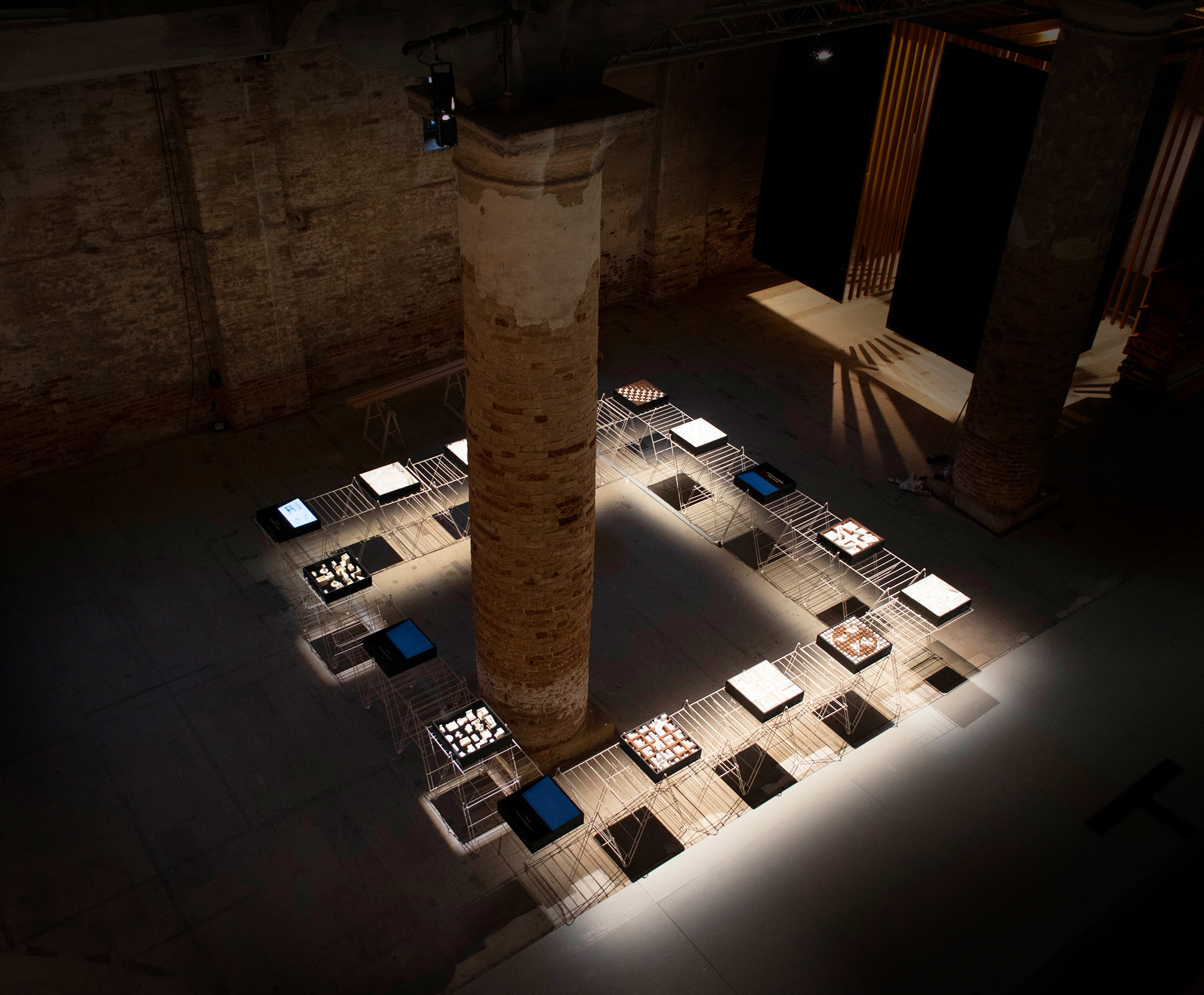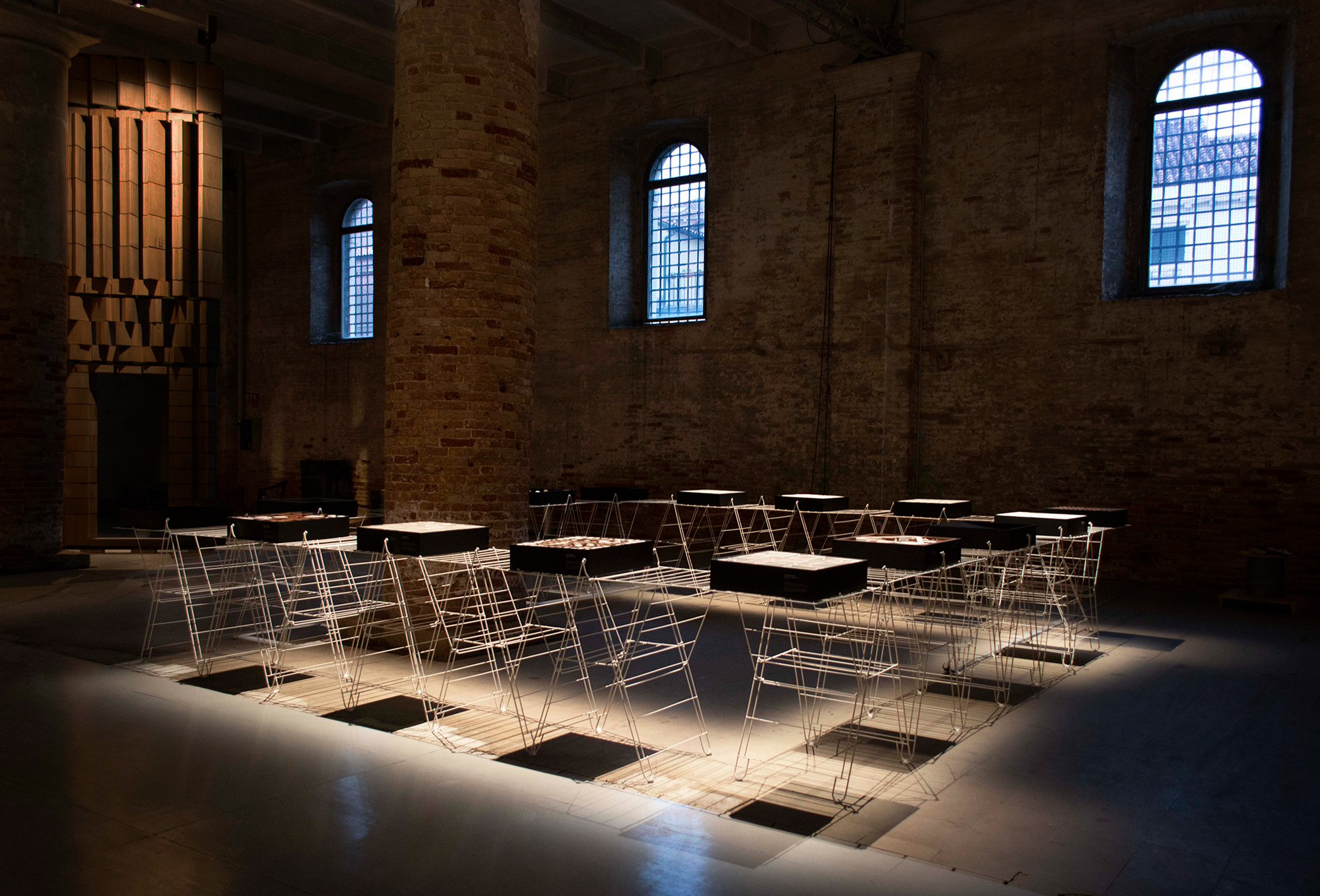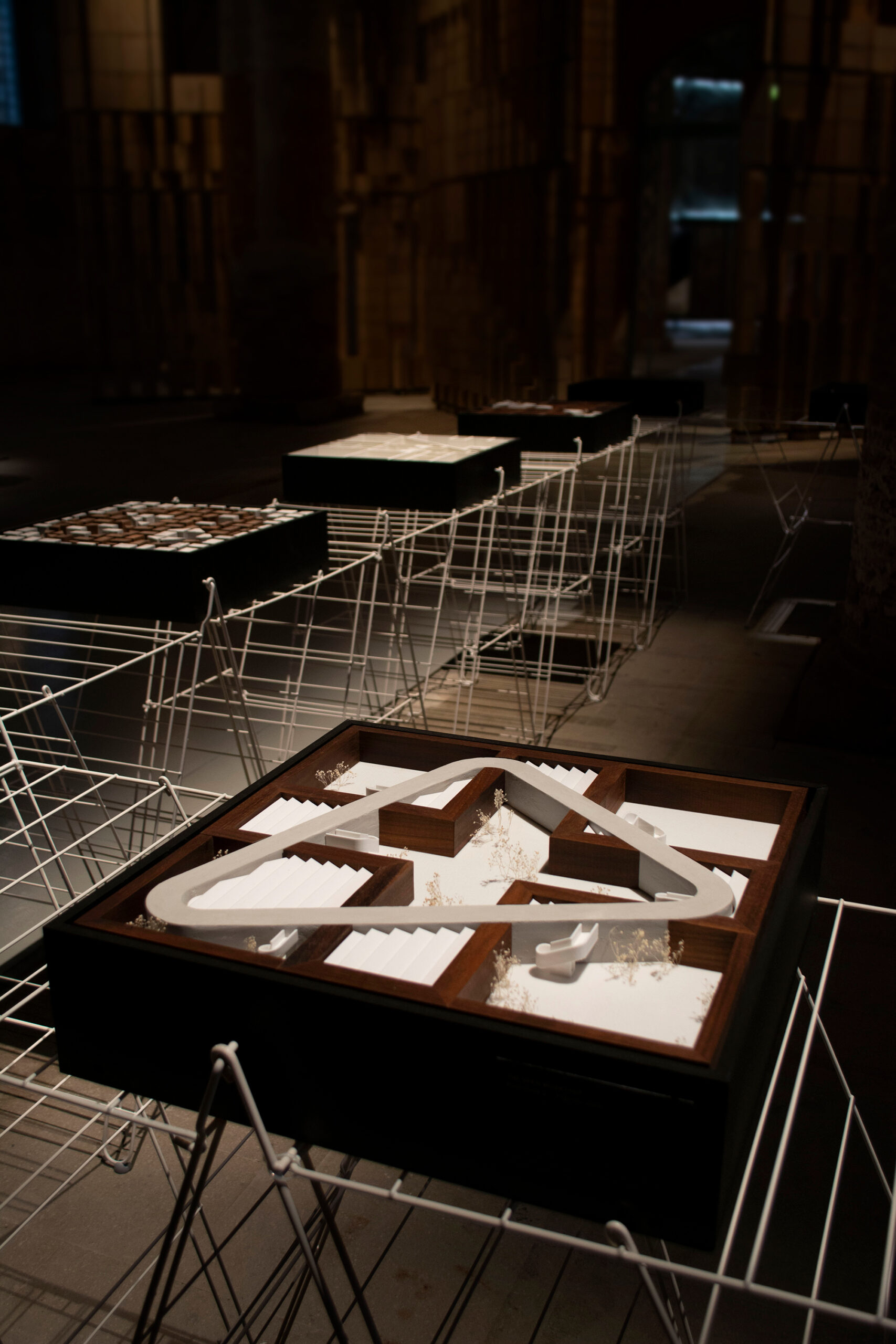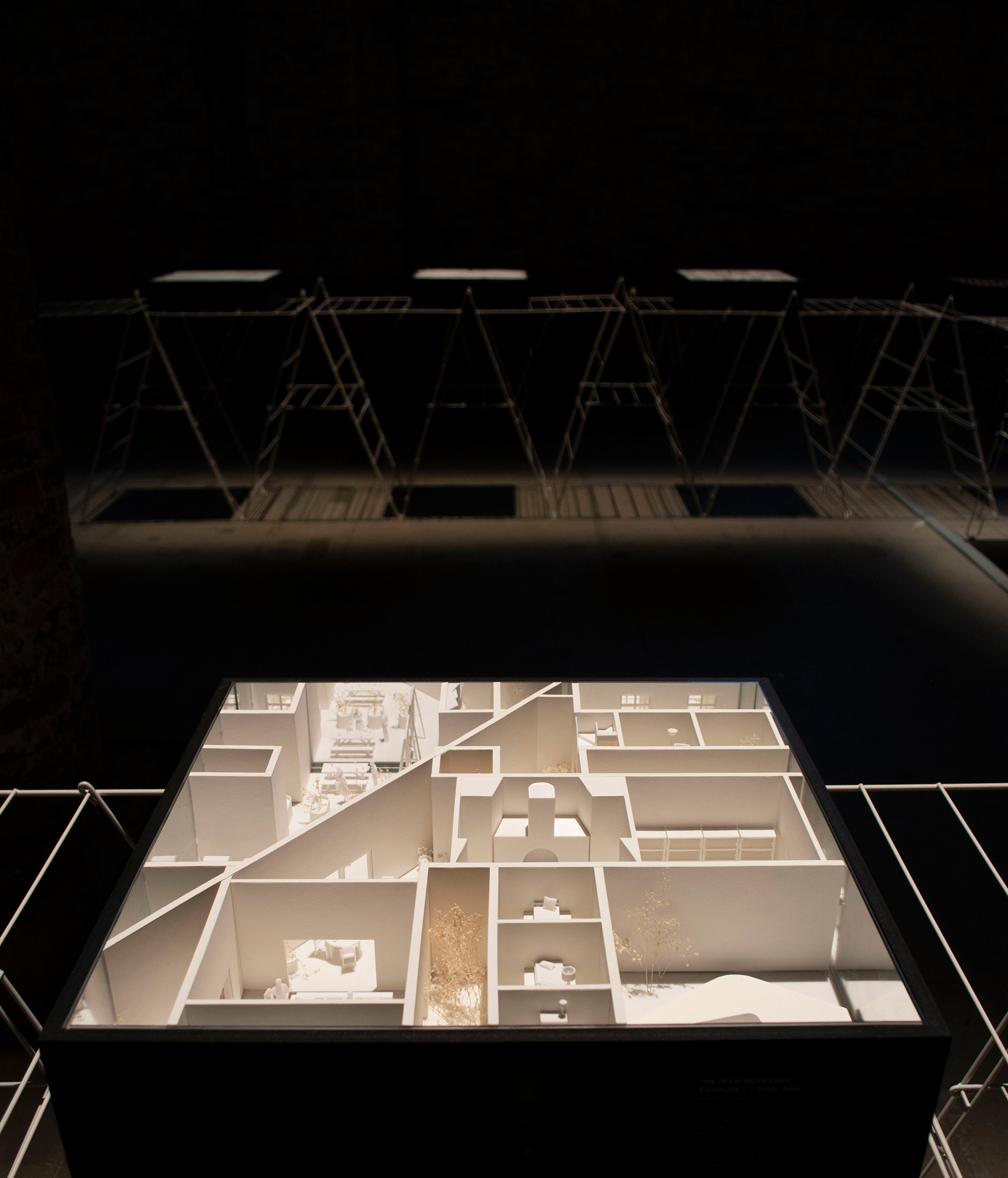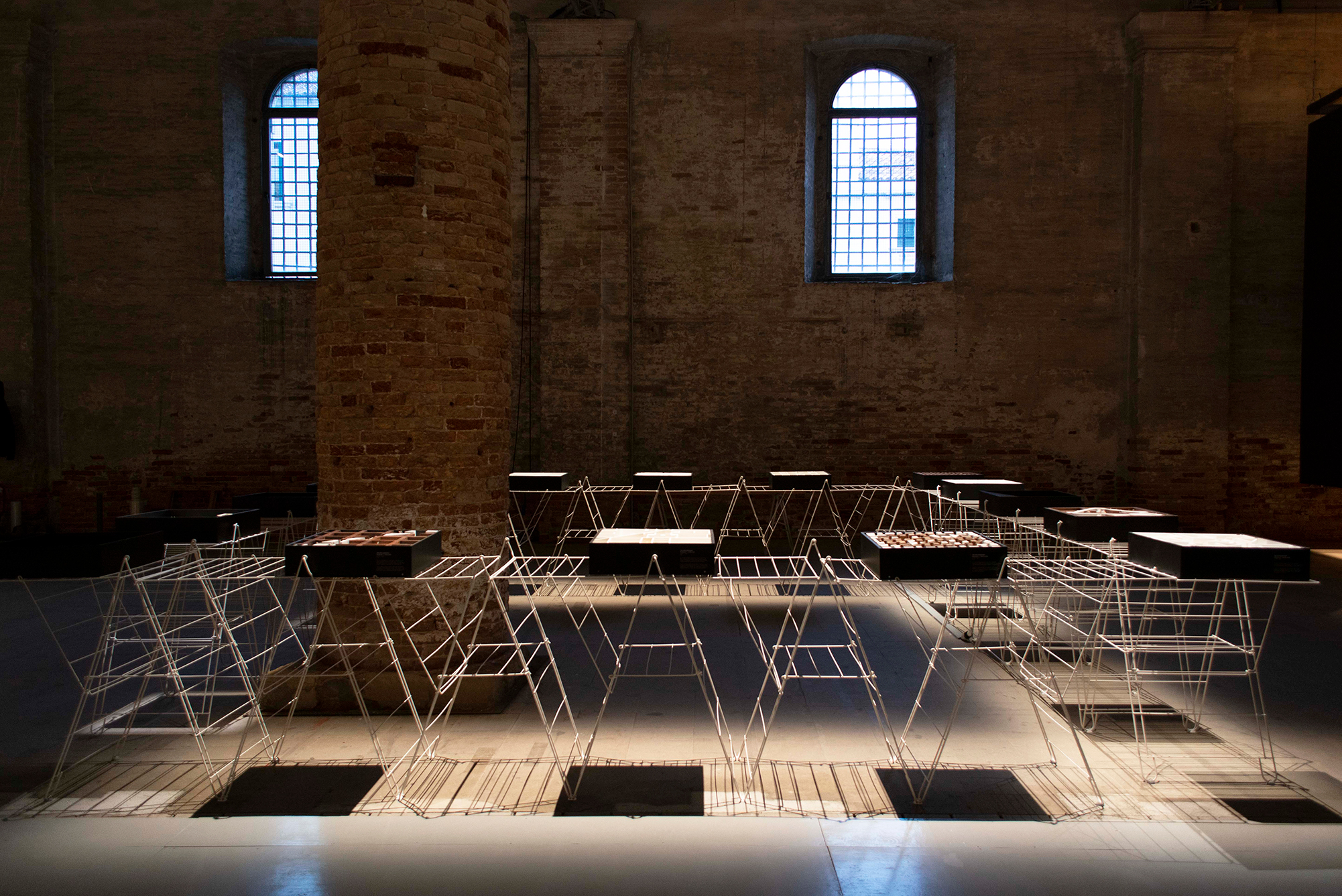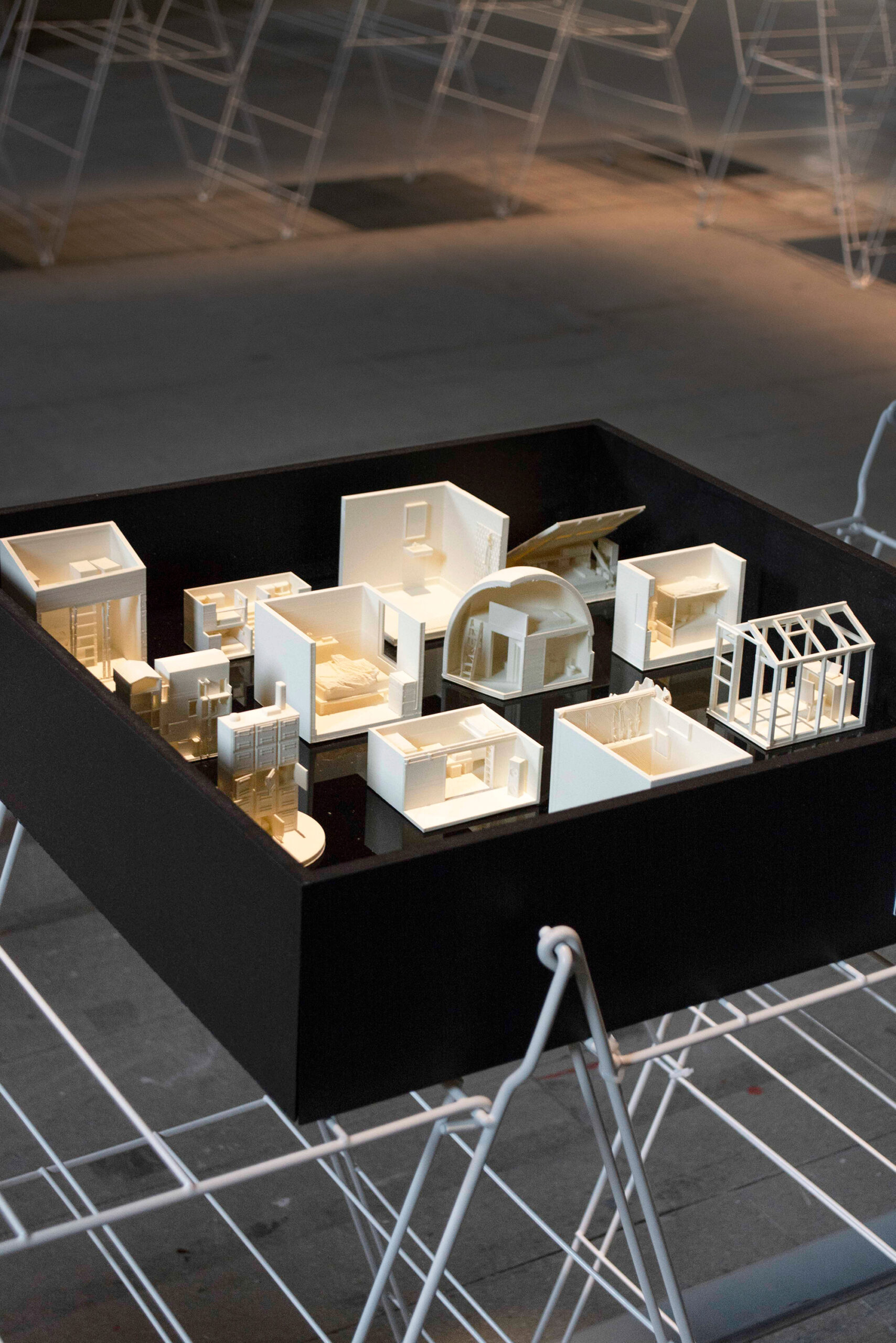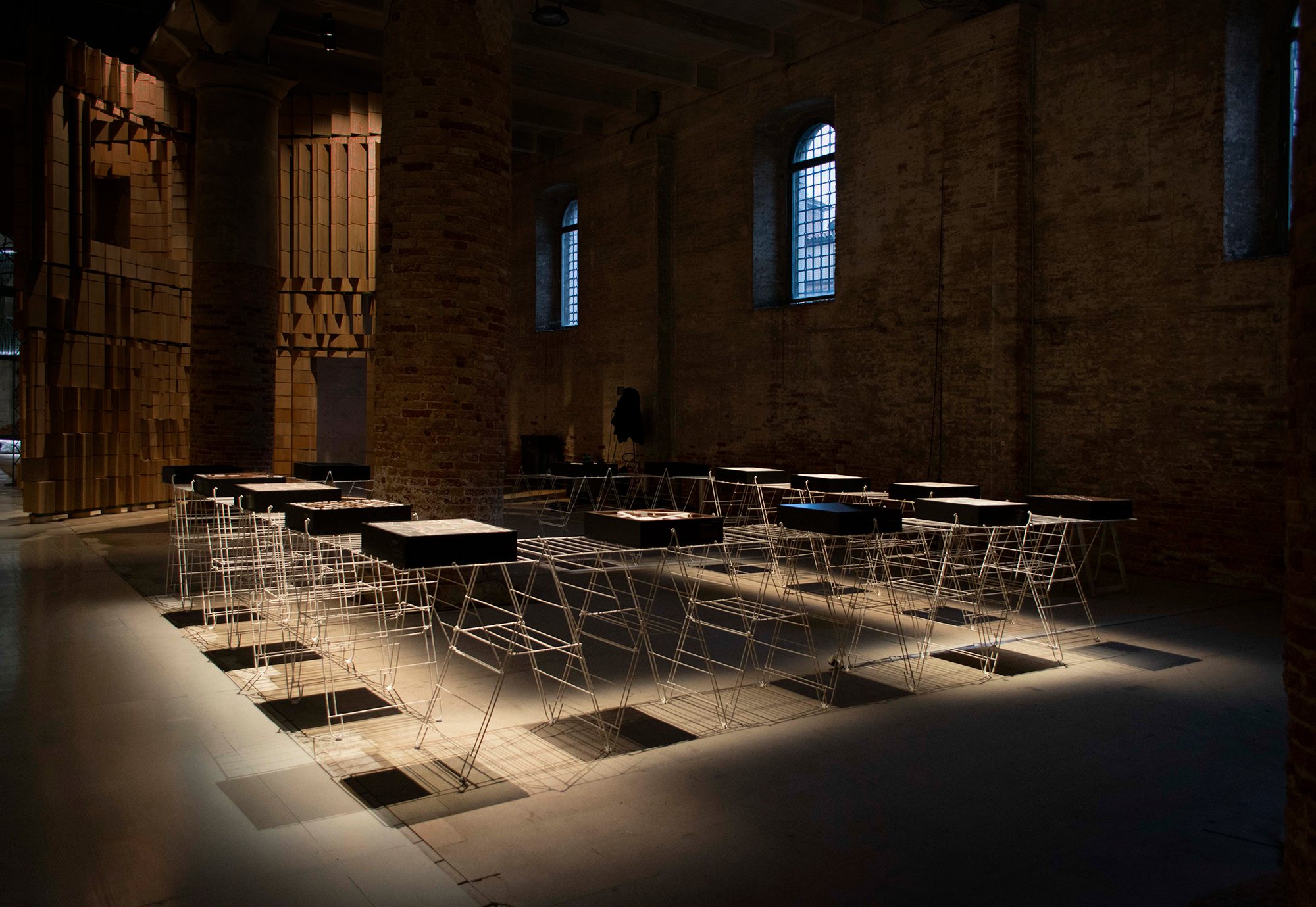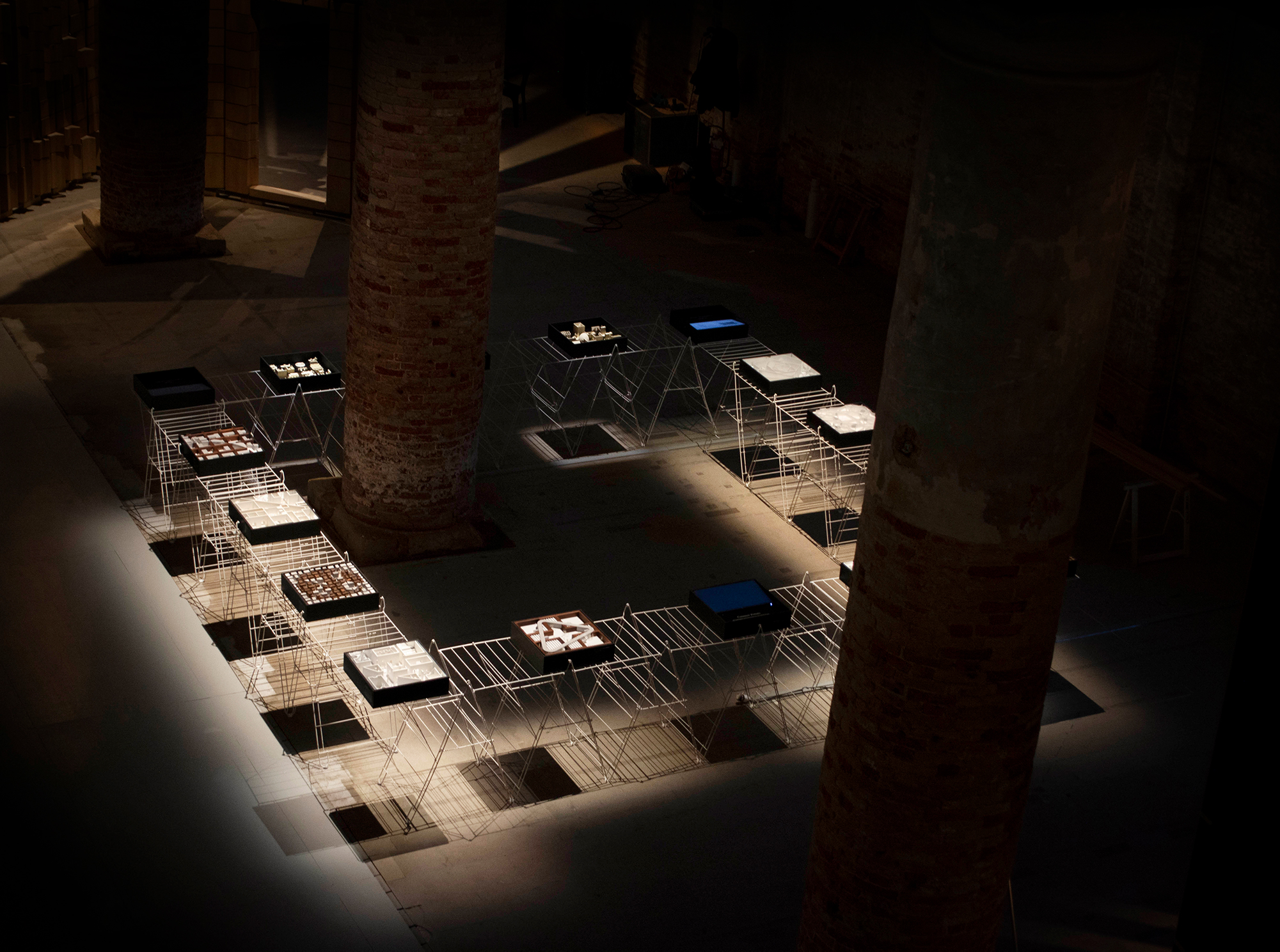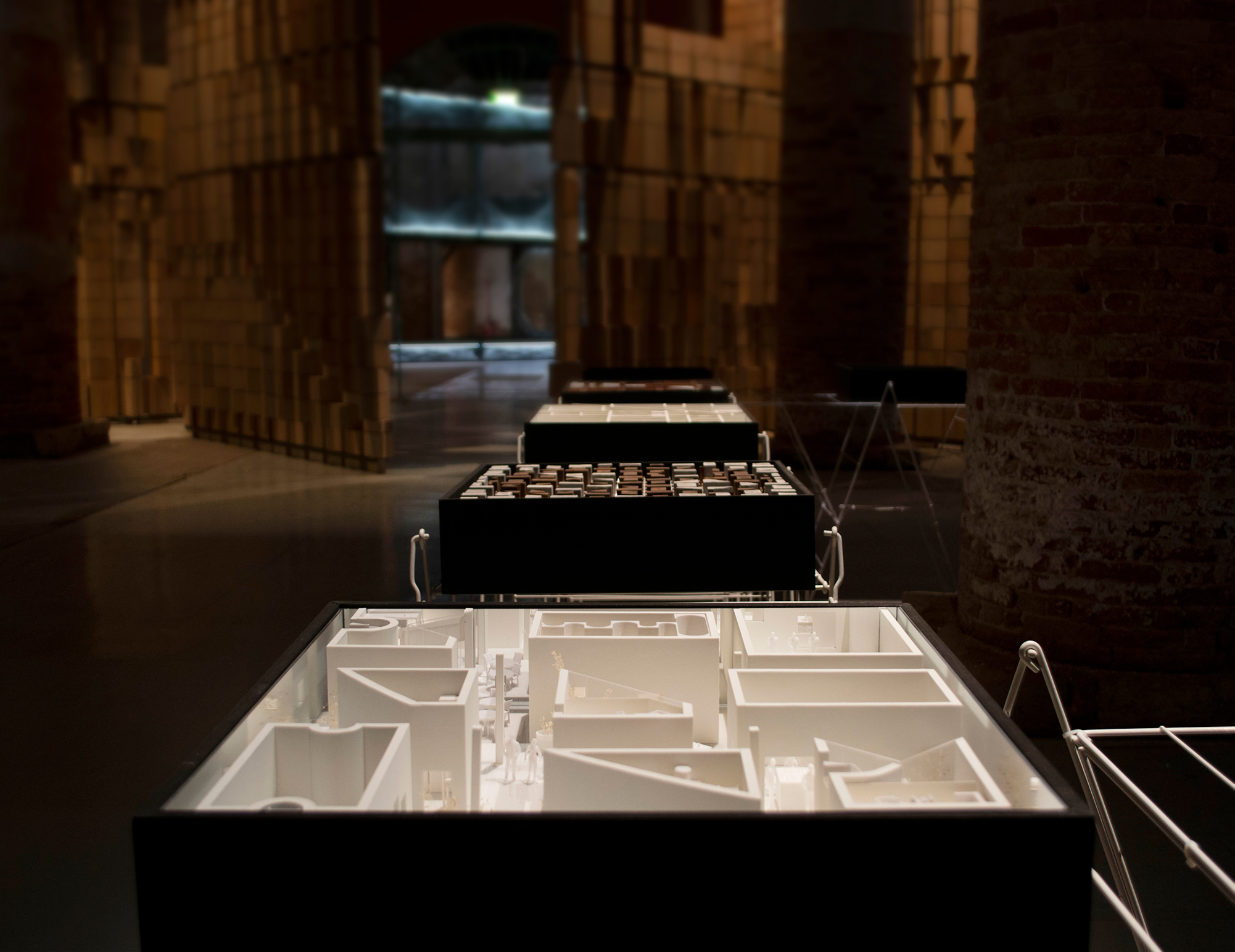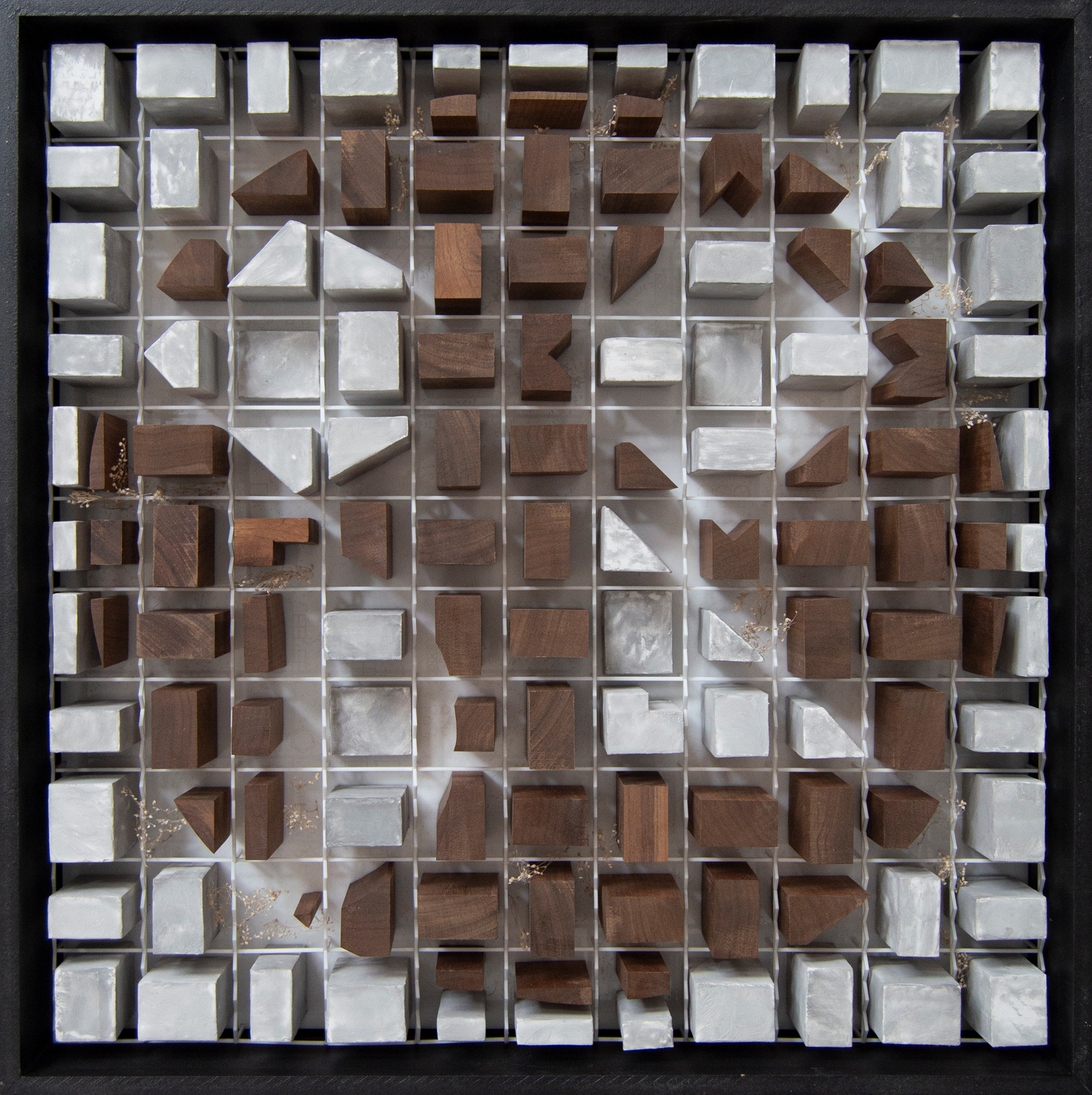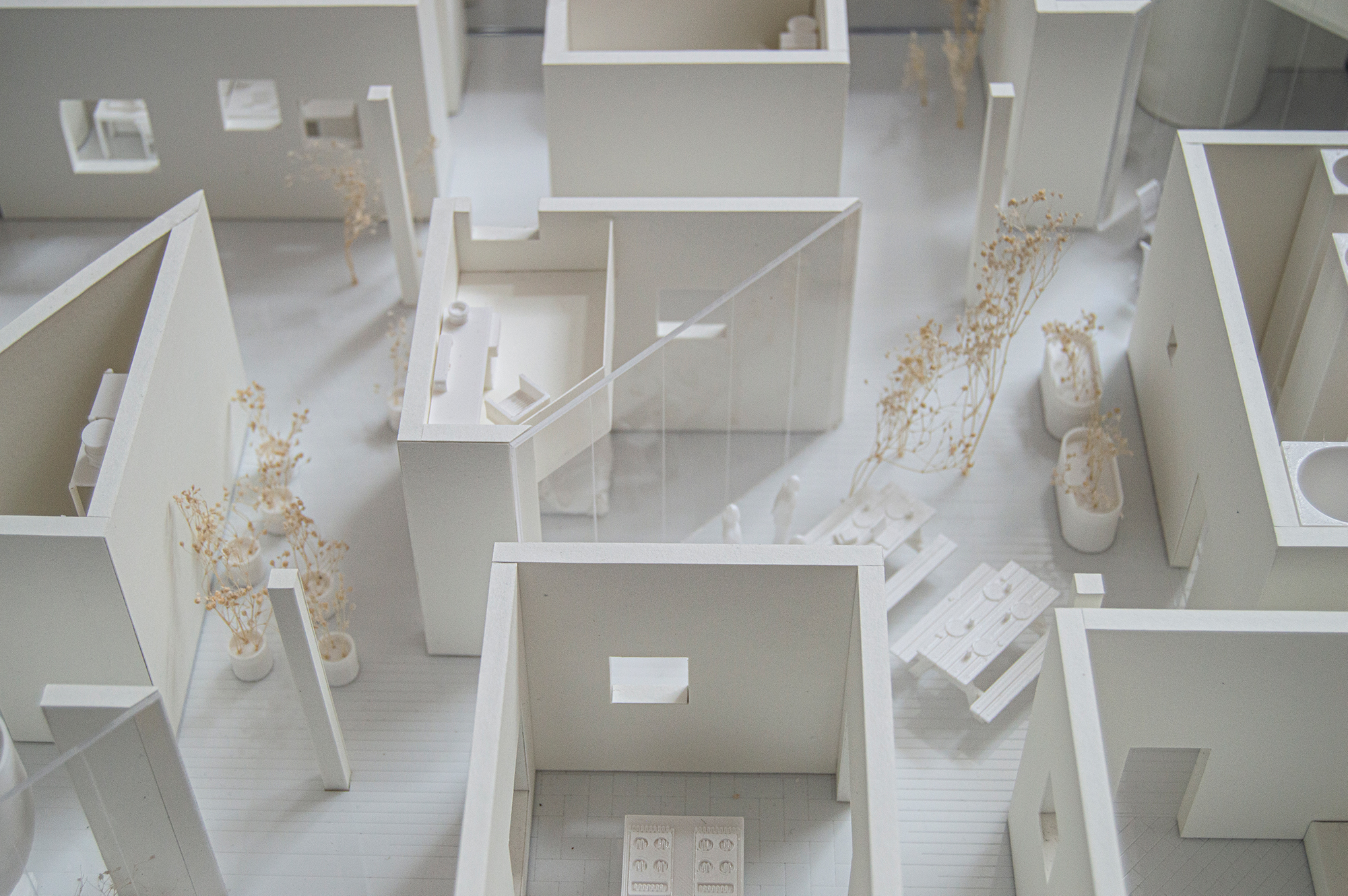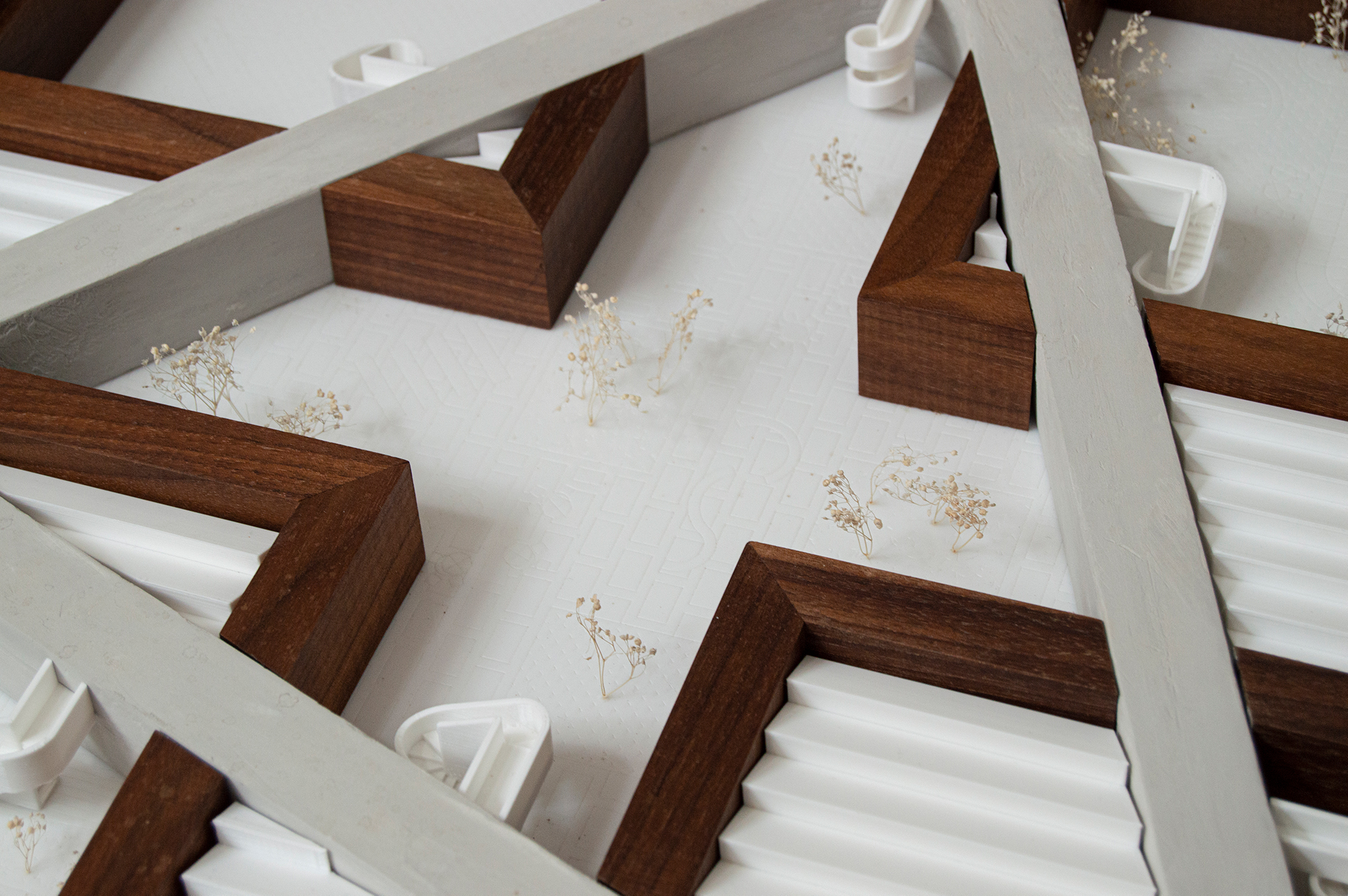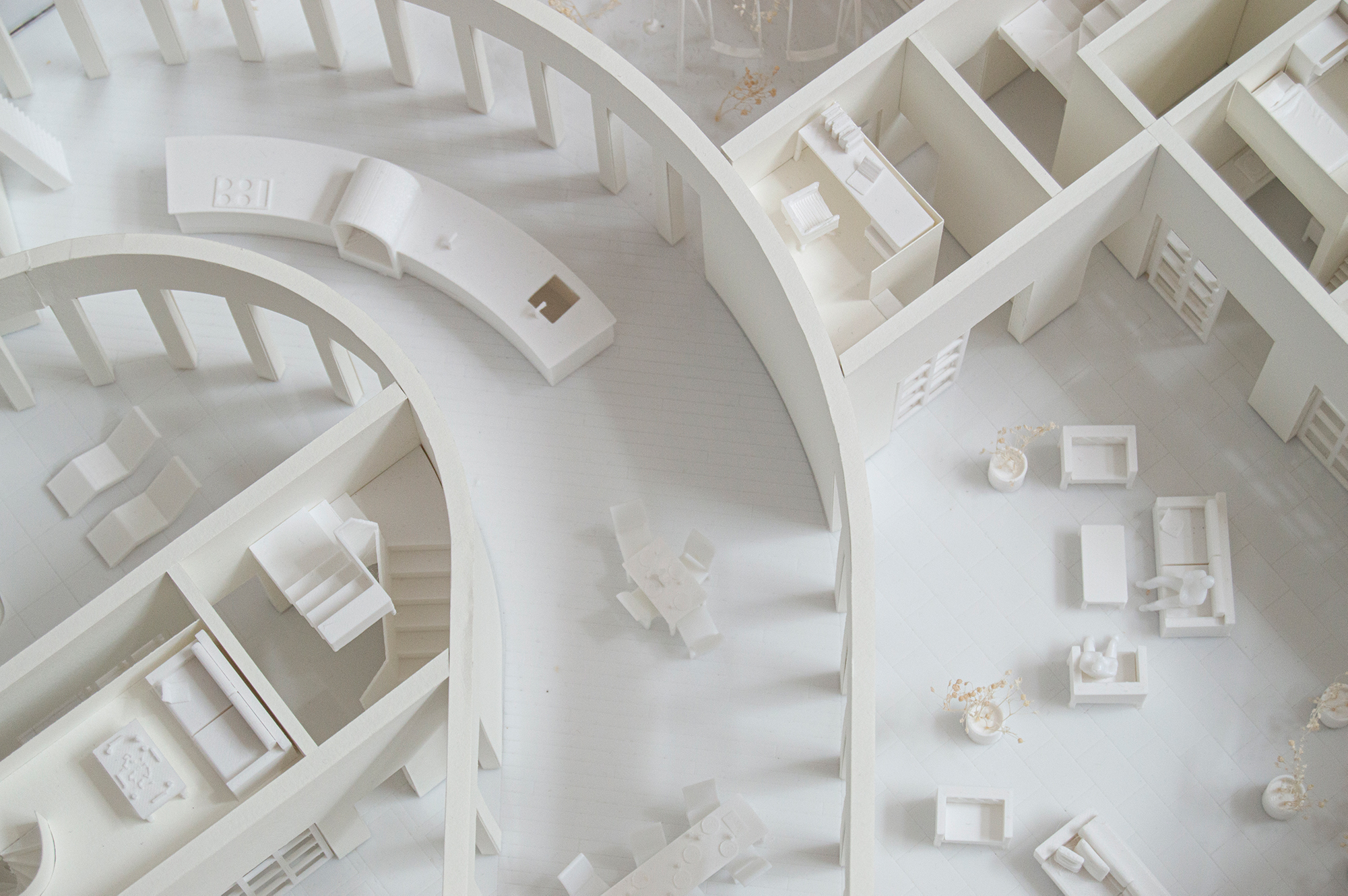Location:
Arsenale, Venice, Italy
Year:
2021
Location:
Arsenale, Venice, Italy
Client / Date of Completion:
Venice Biennale, 2021
Project Team:
THE OPEN WORKHOP, supported by research by Neeraj Bhatia and Antje Steinmuller
Design Team: Neeraj Bhatia, Cesar Lopez, Andrew Bertics, Hannah Jane Kim, Shawn Komlos, Katharina Sauermann, Hayfa Al-Gwaiz
Research Team: Neeraj Bhatia, Antje Steinmuller, Donna Mena, Duy Nguyen, Ireny Abrahim, Vishnu Balunsat, Sayer Al Sayer, Bella Mang, Alma Davila, Clare Hacko, Zhongwei Wang, Zizheng Wu
Photographs:
Katharina Sauermann, Andrew Bertics
Type:
Exhibition
Status:
Built
Sponsors:
California College of the Arts Architecture Division; CCA Urban Works Agency with the San Francisco Planning Department; The University of New Mexico, School of Architecture + Planning; Canada Council for the Arts; George F. Jewett III; Kimberly & Simon Blattner; and Stephen Engblom & Lance Relicke
How and where to locate our collective values are at the core of reconciling what it means to live in a pluralistic society. If we understand pluralism as the dialectic of individual distinction and collective equality, the public realm becomes the arena for political negotiation. How individuals and collectives are mediated through architecture is most clearly manifested in co-living housing typologies, where a renegotiation between public and private realms offers new social and spatial arrangements. Commoning Domestic Space unpacks precisely that by looking closely at hardware, software, and orgware—a set of organizational and governance structures that rule a space—as a way of providing more agency to residents with respect to how they can live together.
Today urban dwellers are often starving for more affordable housing to allow them to create meaningful, social units and embrace contemporary ways of living while still reflecting alternative family forms. Commoning Domestic Space is a design and research project that uses thirty-five case studies (built, speculative, designed, and informal) and five speculative designs to better understand the role of: (i) hardware of spatial arrangements, their frameworks, and the physical interfaces between the public and private; (ii) software or the social types that inhabit these spaces, their family units, communal endeavors, forms of reappropriation, and scales of sharing; and (iii) orgware, which includes governance structures, distribution of domestic labor, and the organization of economics, resources, and power.
Living together is difficult—it requires sacrifice, patience, and flexibility. Moreover, sharing space with others is predicated on an ability to assert identity and lay claim over private territory. Creating a closer fit between the physical form of domestic space and its social and governance structures requires an in-depth examination of spatial strategies and of the process through which they are produced. Most importantly, the projects in Commoning Domestic Space center on the building, maintenance, and governance of a domestic commons, which has offered meaningful social units around shared activities, institutions of culture, community, and empowerment.
